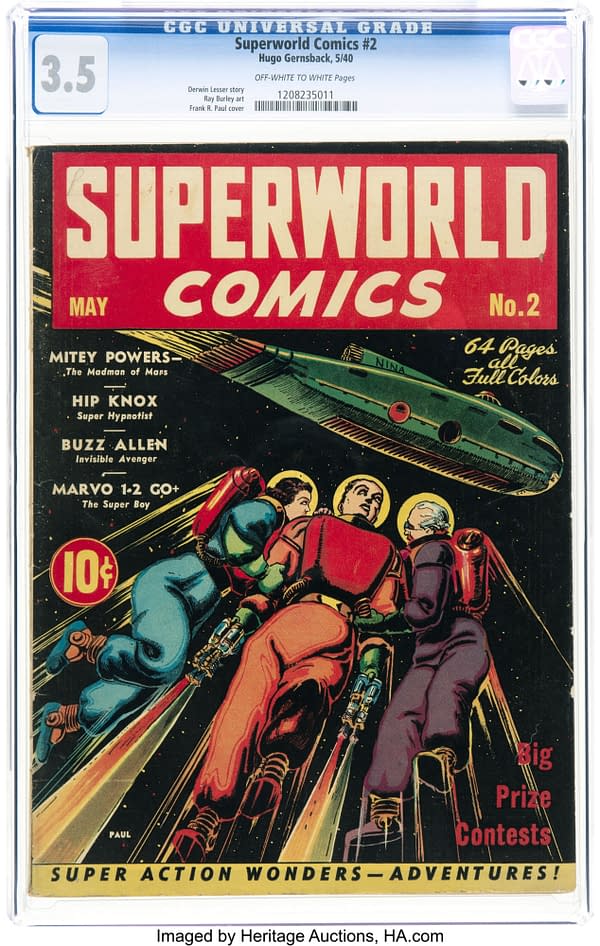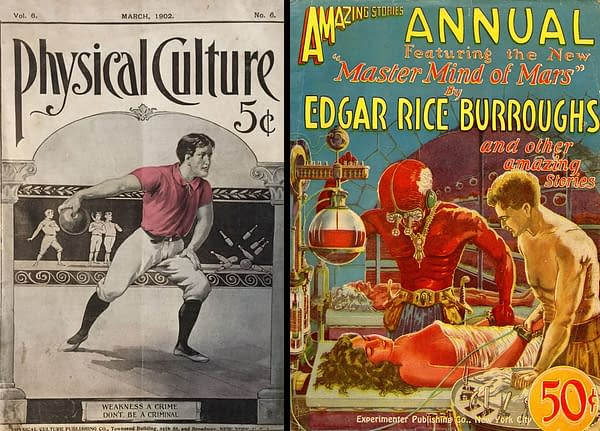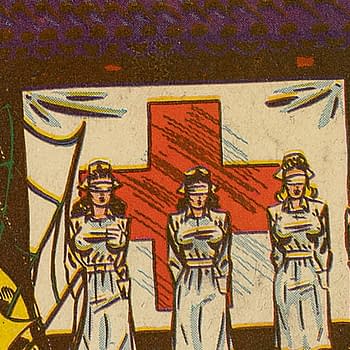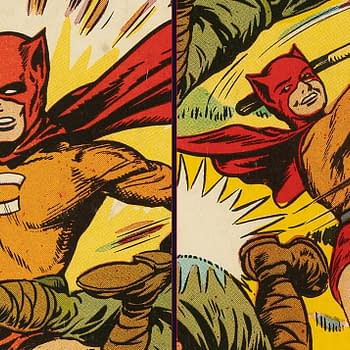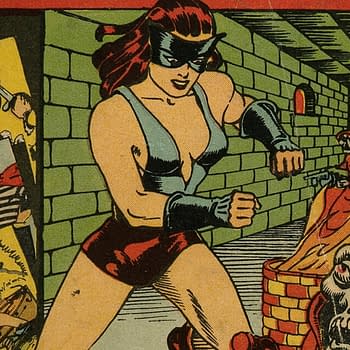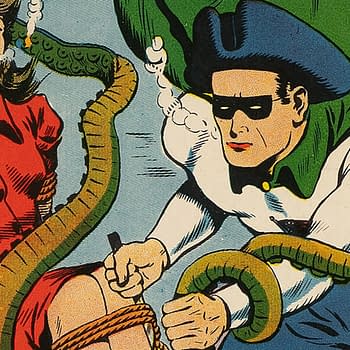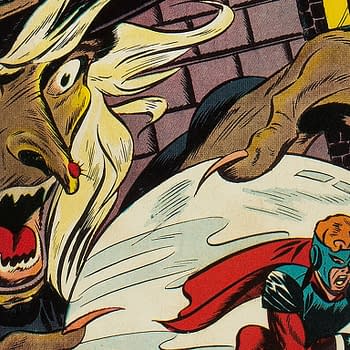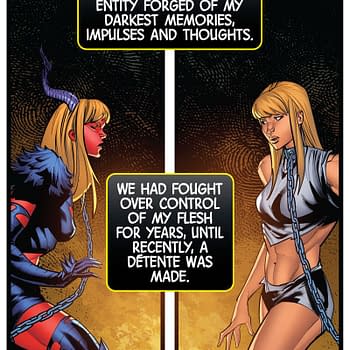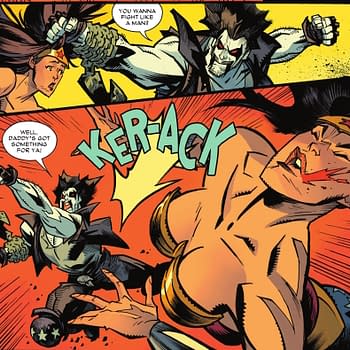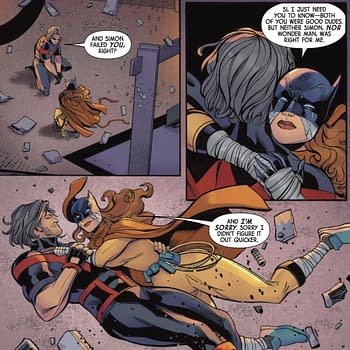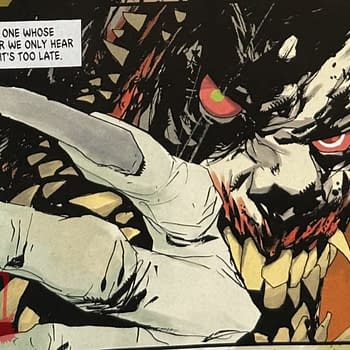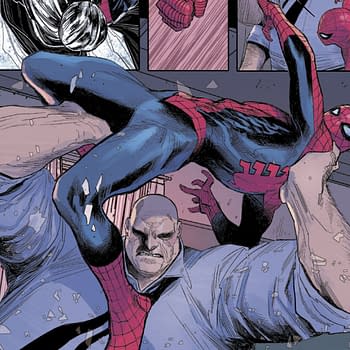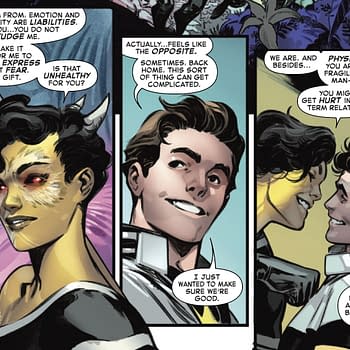Posted in: Comics, Heritage Sponsored, Vintage Paper | Tagged:
Frank R. Paul & Gernsback v Macfadden in Superworld Comics, at Auction
Hugo Gernsback's Superworld Comics #2 has a cover by the legendary Frank R. Paul and a story inspired by Gernsback's conflict with Bernarr Macfadden.
Article Summary
- Superworld Comics #2 features a Frank R. Paul cover and a story symbolizing Gernsback's conflict with Macfadden.
- Hugo Gernsback vs. Bernarr Macfadden: a classic brains vs. brawn business rivalry that shaped 1930s science fiction pulp.
- Gernsback's impact on sci-fi, from Modern Electrics to planting the seeds of the hacker and maker ethos.
- Macfadden reportedly forced Gernsback's Experimenter Publications into bankruptcy, leading to legal entanglements.
I first stumbled across this particular bit of weird comics history from Craig Yoe's Super Weird Heroes Volume 2, and regular readers of these auction posts will know that diving into the background behind how a story or character came to be is pretty much my favorite thing in the world. The Hip Knox stories in Superworld Comics were personal for Gernsback and are symbolic of his conflict with publisher Bernarr Macfadden. The Superworld Comics stories pit Hip Knox, a man with a super-brain, against the underhanded tactics of his arch-enemy, who is actually named Macfadden in the story. Legendary collector Forrest J Ackerman once told Superworld Comics contributor Charles Hornig that Superworld Comics #2 was the final item he needed for his Gernsback collection, but you can get a nicely presenting CGC 3.5 copy up for auction in the 2024 August 1 – 2 Rarities of the Golden Age Comics Showcase Auction #40259 at Heritage Auctions.
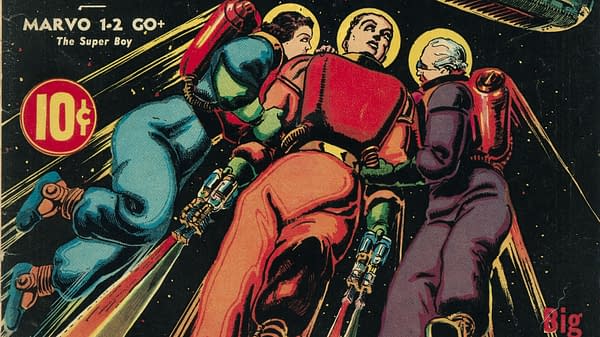
The Gernsback vs Macfadden saga requires some unpacking, so let's start here: Why is Gernsback important? To paraphrase Everett F. Bleiler in Science Fiction: The Gernsback Years, he turned what had previously been a modest stream of science fiction into an actual section of science fiction on the newsstand, which is no small thing. He was an enthusiastic promoter of the genre, he understood how to connect with fandom, and perhaps most importantly of all, he is largely responsible for planting the seeds of what we might today call the hacker or maker ethos. Publications like Radio News, Electrical Experimenter, Modern Electrics, along with an 'educational library' of how-to manuals on these topics encouraged young readers to learn, think, and make.
If Gernsback built his empire on the power of science and imagination, then publisher Bernarr Macfadden largely built his own substantial publishing domain on the power of the body, literally. Macfadden was part of the leading wave of what was then called "physical culture" in America, which began in earnest in the final decade of the 19th century. If bodybuilder and performer Eugene Sandow helped spark the nation's initial fascination with physical culture — which is largely what we'd call health and fitness today — then Bernarr Macfadden would go on to become physical culture's standard bearer.
Just as Gernsback expanded from his original Modern Electrics publication, Macfadden parlayed the success of his Physical Culture magazine into a whole line of magazines, exercise and nutrition publications, bodybuilding gadgets, and similar endeavors. Macfadden expanded into fiction as well, with titles ranging from True Romances, Midnight, True Strange Stories, American Detective, and lots of others.
Eventually, Macfadden's expanding empire brought him into conflict with Gernsback. Gernsback's Experimenter Publications was pushed into bankruptcy in 1929, and Macfadden emerged as the owner of flagship science fiction pulp Amazing Stories in 1931. In a sense, it was perhaps a classic kind of conflict: brains vs brawn, jocks vs nerds (and note the "Weakness a crime, don't be a criminal" blurb on the early issue of Macfadden's Physical Culture shown above).
There are varying opinions among historians as to how this sequence of events played out, with historian Sam Moskowitz and some others claiming that Macfadden stage-managed events with other business interests which pushed Experimenter Publications into bankruptcy, and others simply noting that the record shows that Gernsback was perhaps a better editor and marketer than businessman.
Both Macfadden and a former employee of his turned in bids on the bankrupt Experimenter Publications assets, with the former employee, B.A. MacKinnon, winning the day. The eventual result was a web of financially-related companies which ultimately became the publishers of various former Gernsback titles, with familiar pulp-era names among the principles behind those companies, including Macfadden, Frank Armer and Harry Donenfeld.
Gernsback promptly launched a new line around the brand Wonder Stories but could not sustain his historic successes. In 1936, Wonder Stories was sold to pulp and (future) comic book publisher Ned Pines, who, after a likely legal entanglement with Victor Fox, eventually extended the brand with Wonder Comics.
As for Superworld Comics, although Gernsback was right that the time was right to launch a pure science fiction-focused comic, Fiction House's Planet Comics beat him to the punch by three months. For a variety of reasons, Superworld Comics only lasted three issues and is barely considered a footnote in Gernsback's impressive career, mostly remembered for some great Frank R. Paul covers. But it should be remembered for its clever swipe against Bernarr Macfadden as well, and you can get a nicely presenting CGC 3.5 copy up for auction in the 2024 August 1 – 2 Rarities of the Golden Age Comics Showcase Auction #40259 at Heritage Auctions.
